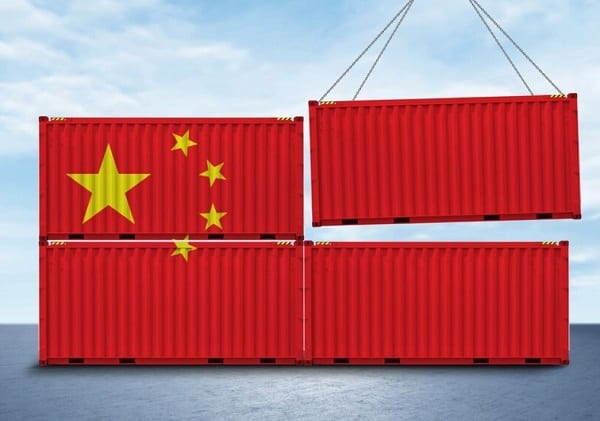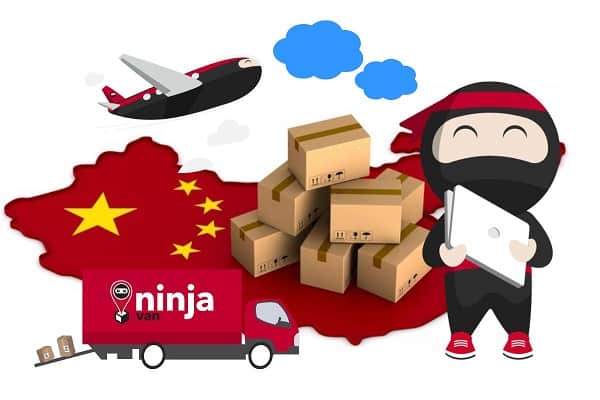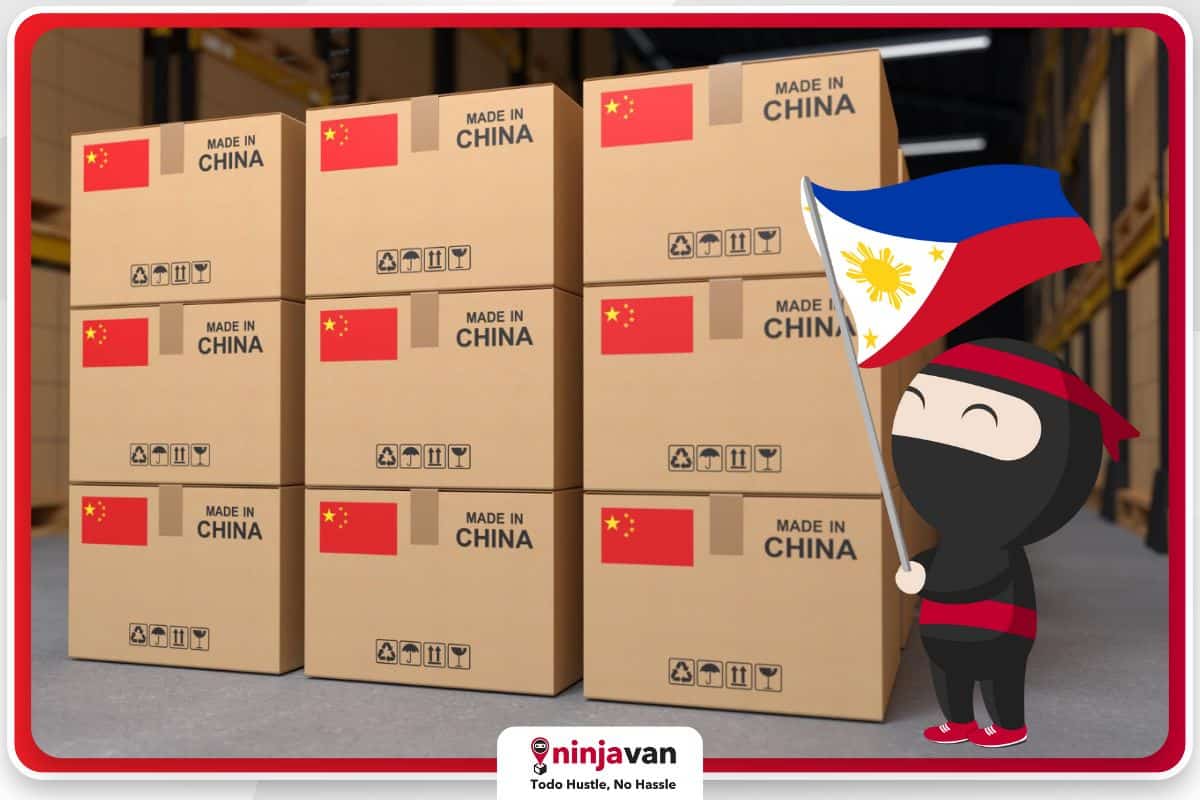Planning to import and ship products from China? Let Ninja Van help you with this simple guide and everything you need to know about shipping from China to the Philippines.
China is one of the Philippines’ biggest trading partners, and in 2021 it has become the second-largest exporter in the world.
Also, with the recent signing of the Regional Comprehensive Economic Partnership (RECP), which greatly eases doing business with industrialized nations like China, it’s the right time to think about importing from the country.
Whether you’re working with suppliers or directly buying products from Taobao platform, your procured products will go through the same rules and processes when you bring them here. So here’s a quick guide to help you get started.
Also read: Best Selling Products on Taobao that You can Sell Locally
How to import from China to the Philippines?
Importing products from China to the Philippines involves several steps, this includes knowing the types of transportation or shipping to consider — air transport, sea transport, freight forwarding, etc.

with a company that will help you with the processes.
But before you get to that part, you’ll need to prepare some documents and set up your processes first. Here’s a general overview of what you need to prioritize.
1. Do market research and product selection
Start by conducting market research to identify the products you want to import and determine their demand in the Philippines.
How would you go about it? Take these steps:
- Check online marketplaces and social media platforms to see emerging trends and products are trending, and consumer preferences. Utilize online tools, industry reports, and social media trends to gather insights into what consumers are looking for.
- Analyze your potential competitors to see what products they’re offering and how well those products are performing. Look for gaps or areas where you can offer something unique or improve upon existing products.
- Check for customer feedback and reviews, both online and offline. Pay attention to what customers are saying about their needs, pain points, and desires. This feedback can provide valuable insights into product demand.
- Regularly check out Ninja Van blog for tips on the best selling products in the Philippines, both trending nd seasonal
2. Register your business and secure permits
Make sure that your business is registered and compliant with Philippine regulations.
You’ll need to register your business with the Bureau of Customs where you’ll be granted an Import Clearance Certificate with a validity of three years. You’ll also need to open an account in the BoC’s Client Profile Registration System, which needs to be renewed every year.
Renewal takes around 15 working days and a current fee of around US$20 or P1000.
Depending on your business type, you’ll also need to check for specific permits and licenses for your imported products. These include the Department of Trade and Industry (DTI), the Food and Drug Administration (FDA), the Department of Environment and Natural Resources (DENR), and others.
3. Find reliable suppliers in China
Look for reputable suppliers in China. Attend trade shows, search online marketplaces, or use supplier directories to find potential partners. You must verify their credentials and ensure their products’ quality complies with Philippine standards.
Negotiate prices, payment terms, shipping terms (e.g., FOB, CIF), and product specifications with your chosen suppliers. Don’t forget to get all agreements in writing!
#NinjaTip: An easier alternative is finding a company to do the sourcing and procurement for you, which will save you time and money. Ninja Direct is a Ninja Van service that provides safe, reliable and hassle-free end-to-end sourcing and procurement services in the Philippines.
All you have to do is talk to our team about your requirements and we’ll handle everything from finding the right suppliers, creating flexible payment, and facilitating cross-border fulfillment.
4. Determine shipping and logistics
Calculate your shipping costs, including freight charges, insurance, and customs duties.
Then determine the most suitable shipping method (sea freight, air freight, or a combination) based on your product’s nature and urgency. Work with a reliable freight forwarder or shipping company to handle the logistics, customs clearance and documentation.
5. Prepare for Customs clearance
Prepare all the necessary documentation when your goods arrive in the country. You must present the following to get Customs clearance:
- Ocean Bill of Lading or Air Waybill
- Commercial invoice
- Packing list
- Import permit
- Certificate of Origin
- Customs import declaration
- Other necessary documents
You’ll need to pay the applicable customs duties and taxes. These may include import duties, value-added tax (VAT), and other fees. Most items being imported from China are subject to 0% duties but a 12% VAT may be added on the goods’ value.
6. Set up local distribution and sales
Set up a distribution network or identify local partners if needed to distribute and sell your imported products in the Philippines.
If you’re planning to sell them through your own e-commerce platform, develop a marketing strategy to promote your products in the Philippine market.
Make sure your imported products meet all Philippine regulatory requirements and standards before releasing them to the market, this may include safety, labeling, and packaging regulations.
7. Do continuous monitoring and compliance
Stay informed about changes in import regulations, tariffs, and taxes to remain compliant with Philippine laws. You can consult with professionals experienced in international trade and legal matters to ensure a smooth and compliant import process.
Additionally, consider hiring a customs broker or an import consultant who can guide you through the specific requirements and procedures when shipping from China to the Philippines. Importing can be complex, so careful planning and due diligence are crucial to your success.
How much is the shipping fee from China to Philippines?
The shipping cost from China to the Philippines significantly varies depending on several factors, including:

weight & volume, destination or port, taxes and other factors.
Shipping method. Common options include air freight, sea freight (container or less-than-container load). Air freight is typically faster but more expensive.
Distance and destination. Longer distances generally result in higher shipping costs.
Weight and volume. Heavier and bulkier shipments will cost more to transport.
Shipping company and service level. Different shipping companies and service levels come with varying pricing structures. Rates may also depend on the reputation and reliability of your chosen courier.
Customs duties and taxes. Be sure to factor in these expenses when calculating your total shipping costs.
Additional services. Special services like insurance, tracking, or expedited delivery can increase the shipping cost.
Seasonal and market factors. Shipping costs can fluctuate based on market demand and seasonal factors. Peak shipping seasons or disruptions like the COVID-19 pandemic can impact prices.
Choose Ninja Direct to handle your sourcing and shipping from China
We won’t lie, there are many complex steps you need to take and things to prepare when importing from China to the Philippines. And they could take away your focus from other important things in your business.

So let Ninja Direct take this burden off your shoulders, because we’re your one-stop shop for all your sourcing and procurement needs. You can import high-quality products from China to the Philippines hassle-free!
Enjoy the following features:
- A single touchpoint for your product sourcing, procurement, payment and shipping
- Competitive pricing for your products as Ninja Direct has an extensive network of suppliers
- Flexible financing options and payment terms, and secured overseas payments. You can even pay in PH currency via our secure payment portals
- Cross border and freight forwarding services, you can receive products from suppliers without crossing multiple borders.
- Ninja Van team to manage customs clearance, currency exchange, and tax documentation for you.
- Work with a reliable partner with years of experience in logistics and supply chain management
Ready to take the next step? Talk to our experts about Ninja Direct and get the VIP service you deserve.
用您首选的语言了解Ninja Direct的采购服务。
或者与我们讲中文的客户经理讨论您的运输需求。立即联系我们!
Follow Ninja Van on WeChat:







